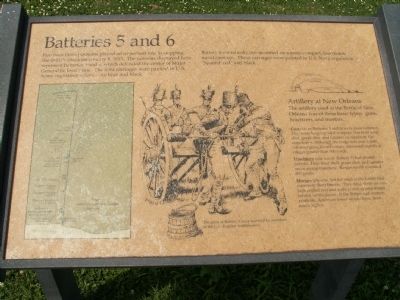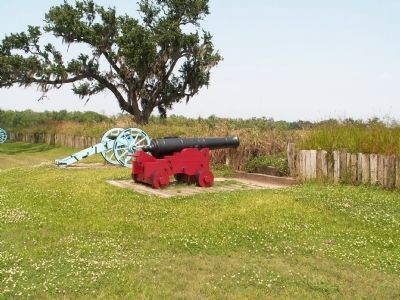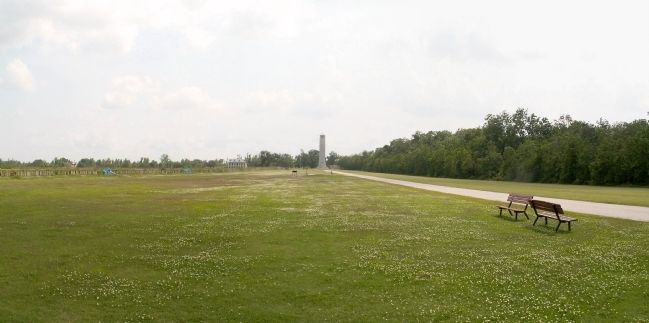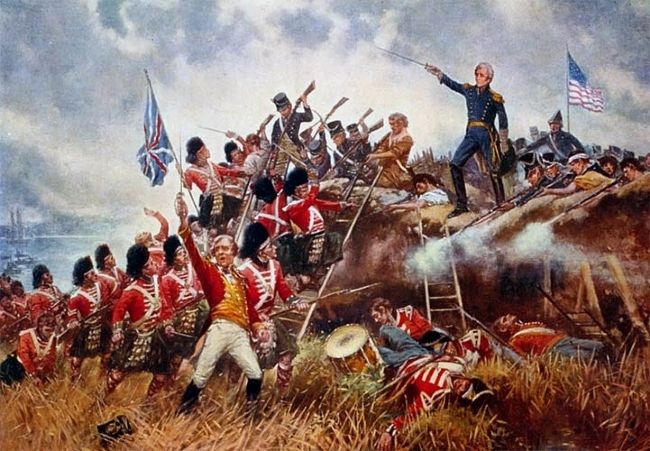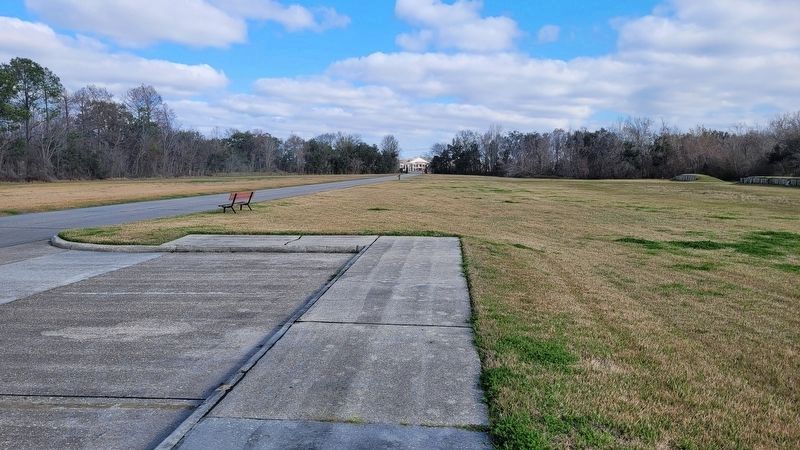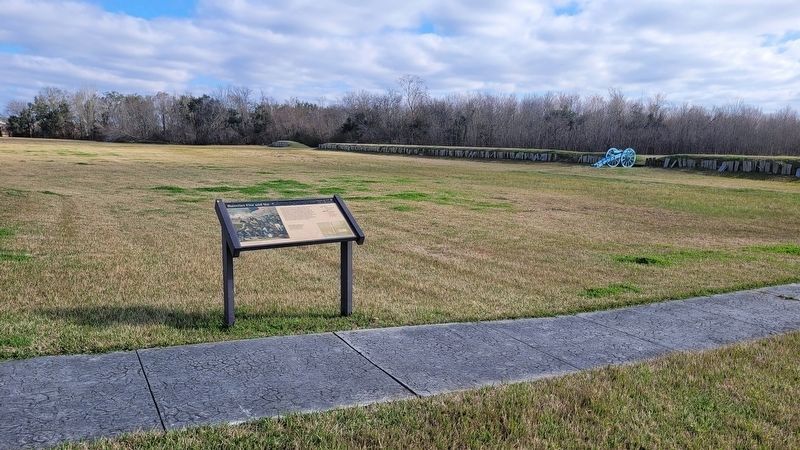Chalmette in St. Bernard Parish, Louisiana — The American South (West South Central)
Batteries 5 and 6
Battery 6 contained guns mounted on a more compact mobile naval carriage. These carriages were painted in U.S Navy regulation “Spanish red” and black.
Artillery at New Orleans
The artillery used at the Battle of New Orleans was of three basic types: guns, howitzers, and mortars.
Guns (As in Batteries 5 and 6) were most common. They were long-barreled weapons that fired solid shot, grape shot, and canister on relatively flat trajectories. Although the range was over a mile for most guns, their accuracy decreased rapidly at ranges greater than 500 yards.
Howitzers (one was in battery 1) had shorter barrels. They fired shell, grape shot, and canister on an arcing trajectory. Ranges rarely exceeded 800 yards.
Mortars (present, but not used in the battle) had extremely short barrels. They fired shells on very high angled arcs and were useful against troops behind fortifications. If the British had mortars available, American losses would have been much higher.
Erected by National Park Service.
Topics. This historical marker is listed in this topic list: War of 1812. A significant historical date for this entry is January 8, 1815.
Location. Marker has been reported missing. It was located near 29° 56.7′ N, 89° 59.549′ W. Marker was in Chalmette, Louisiana, in St. Bernard Parish. Marker was on Battlefield Road, on the left when traveling south. Touch for map. Marker was in this post office area: Chalmette LA 70043, United States of America. Touch for directions.
Other nearby markers. At least 8 other markers are within walking distance of this location. Batteries Five and Six (within shouting distance of this marker); Batteries Seven and Eight (within shouting distance of this marker); Chalmette Battlefield And National Cemetery (about 600 feet away, measured in a direct line); Battle Of New Orleans 200th Anniversary (about 800 feet away); Battery Four (approx. 0.2 miles away); The Kentucky Rifle (approx. 0.2 miles away); Chalmette Battlefield (approx. 0.2 miles away); Fazendeville (approx. 0.2 miles away). Touch for a list and map of all markers in Chalmette.
More about this marker. The center illustration on the marker shows The guns at Battery 5 were manned by U.S. Regular artillerymen. A map on the left details the disposition of U.S. troops and batteries. On the right a

Photographed By Bryan Olson, May 2007
2. The American Rampart
Batteries 5 and 6, along with Batteries 7 and 8 to the northeast anchoring the left flank of Jackson’s line, helped to stop Gibbs’s advancing column on January 8. The cannon in battery 5 are reproductions of the two six ponders used here the day of the battle.(NPS)
Additional keywords. Battle of New Orleans, Chalmette Battlefield

Photographed By Bryan Olson, May 2007
3. An American Gun
Guns were most common. They were long-barreled weapons that fired solid shot, grape shot, and canister on relatively flat trajectories. Although the range was over a mile for most guns, their accuracy decreased rapidly at ranges greater than 500 yards.
Credits. This page was last revised on January 14, 2023. It was originally submitted on March 16, 2008, by Bryan Olson of Syracuse, New York. This page has been viewed 2,142 times since then and 59 times this year. Photos: 1, 2, 3, 4, 5, 6. submitted on March 16, 2008, by Bryan Olson of Syracuse, New York. 7, 8. submitted on January 13, 2023, by James Hulse of Medina, Texas. • Craig Swain was the editor who published this page.
